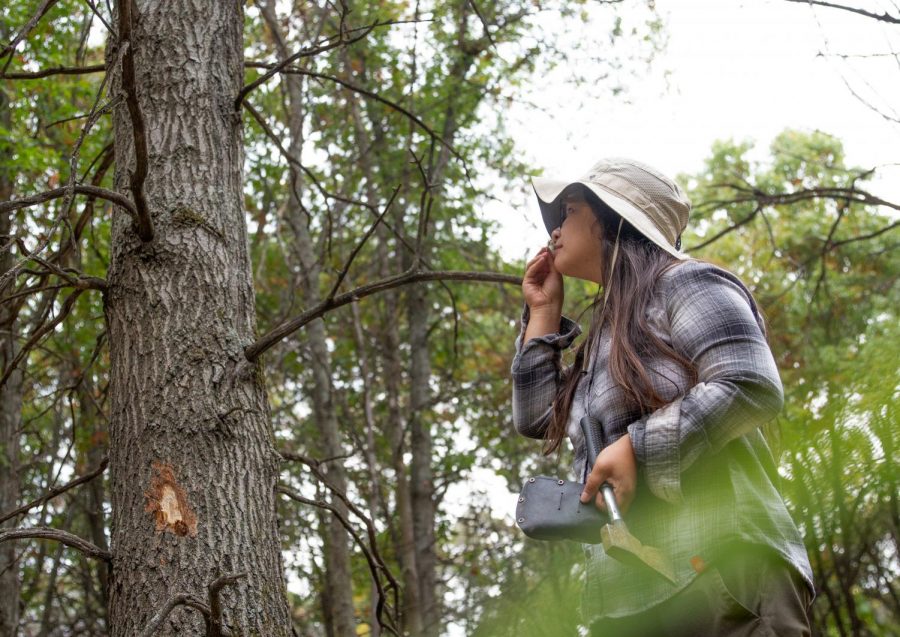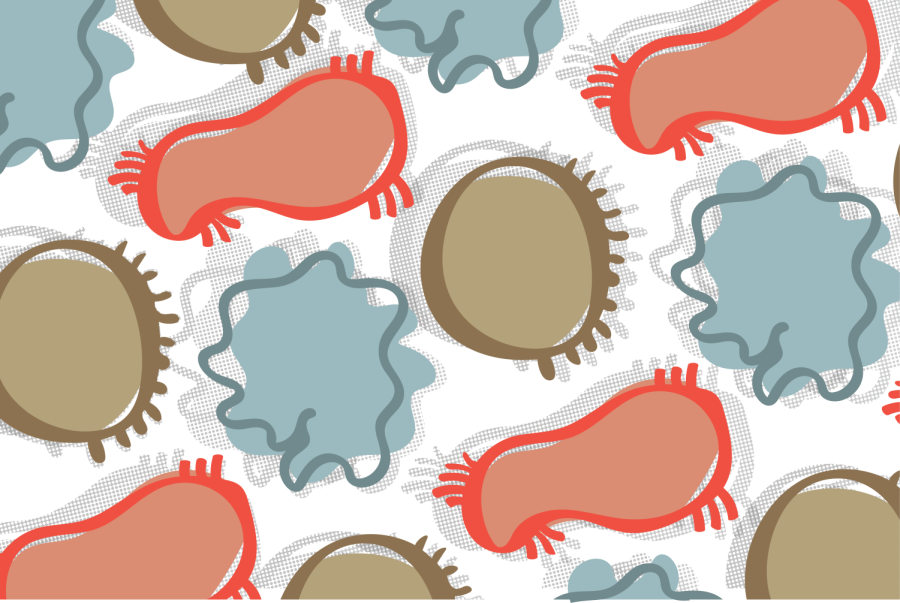With the help of a new grant, a team of researchers at the University of Minnesota researchers are studying oak wilt, an invasive fungus that is threatening Minnesota’s oak tree population.
Sometimes characterized by browning or golden leaves at the top of the tree and a dark bluish-gray discoloration in the bark, oak wilt kills thousands of trees each year, and the disease is present in about a third of oak habitats in Minnesota. Using new spectral technology, and backed by the Environment and Natural Resources Trust Fund, the team can better identify which trees are infected and analyze how they respond to the fungus.
Jeannine Cavender-Bares is a University researcher who has been studying oak trees in the Americas for the past 20 years.
Studying oak wilt in the past has been labor-intensive and expensive, and the fact that the fungus spreads mostly underground has made it nearly impossible to detect at a broader scale until now, she said.
Because the fungus spreads primarily by the tree’s roots, oak wilt can be difficult to detect. Monitoring forest health by foot has been expensive and time consuming. But new technology like satellite imaging and spectral technology can analyze a tree’s vitals even before it shows physical signs of sickness.
Using handheld devices, drones and airborne hyperspectral sensors, University researchers have been gathering the light reflecting off forest canopies. This light contains information about the species of tree, its physiological condition and health and the degree of stress it is under.
Cavender-Bares said this technology will give researchers an advantage. And with oak wilt, timing is everything.
“The whole key to treating it effectively is to find it quickly before it spreads to other trees,” she said. “Being able to detect where patches are emerging can give [forest] managers a leg up on knowing where to go to treat it.”
Oak trees make up a third of deciduous forests in the U.S. and are one of the most important tree lineages, said Gerard Sapes, a University researcher on the project. Not only do oaks store and filter carbon out of the atmosphere, oak trees are essential in preventing run-off, preserving habitat and even foster the economy through the export of lumber.
Without oaks, there are more greenhouse gasses in the atmosphere, which contributes to climate change and could have disastrous consequences, he said.
Oak wilt is highly contagious and spreads most commonly from infected trees to other oaks through a series of interlocking root systems below ground. In more advanced stages of infection, oaks generate spores that are then spread over longer distances by sap beetles.
Once infected, the fungus travels through water vessels in the tree’s trunk, causing the tree to block the vessels in order to prevent the infection from spreading. Some types of oak fare better than others. White oaks are able to delay the fungus for longer, but red oaks are especially susceptible to the disease and can die from oak wilt within a month. Too many blocked vessels will cause the tree to die from lack of water and nutrients.
Now, with the help of a new U.S. Forest Service grant, University researcher Jesús Pinto-Ledezma will be using satellite data to develop a software modeling system that will help the Department of Natural Resources track and detect oak wilt over larger areas. With this technology, people like forest rangers will be able to generate maps that predict where oak wilt will spread so they can get ahead of the curve, he said.
Once a tree is sick, scientists can prevent the spread of oak wilt by severing the root systems of infected trees and those around it with a vibratory plow vibratory plow. Other solutions include uprooting and removing the tree, or, in most expensive circumstances, treating the tree with a fungicidal treatment, which is time consuming and requires repeated application.
Anna Yang, a University graduate student on the project, is studying whether the fungus lingers in sites that have infected tree roots still remaining in the ground. She is also looking into what plants grow in the space a removed oak tree leaves behind. Anecdotally, she has noticed a lot of invasive buckthorn, which can be worrying because buckthorn has few predators and often pushes out native plants.
Losing so many oaks will have lasting impacts on Minnesota wildlife, especially for the animals who rely on acorns as a food source and oak branches for nesting sites, said Val Cervenka, the forest health program consultant for the Minnesota DNR. Even Minnesotans who enjoy the aesthetics of forests will notice a change.
“We’re not in immediate danger of having all our oak trees lost to oak wilt,” she said. “But … there are ways to control oak wilt so that we can snuff out those pockets of disease if they’re caught soon enough.”























